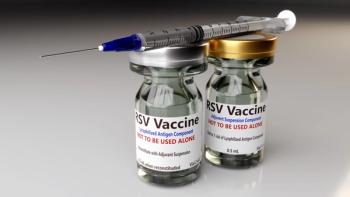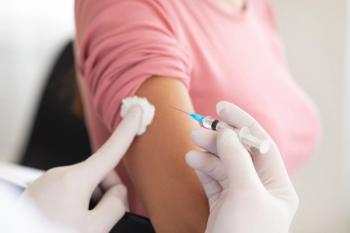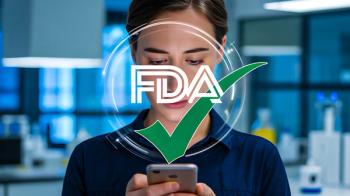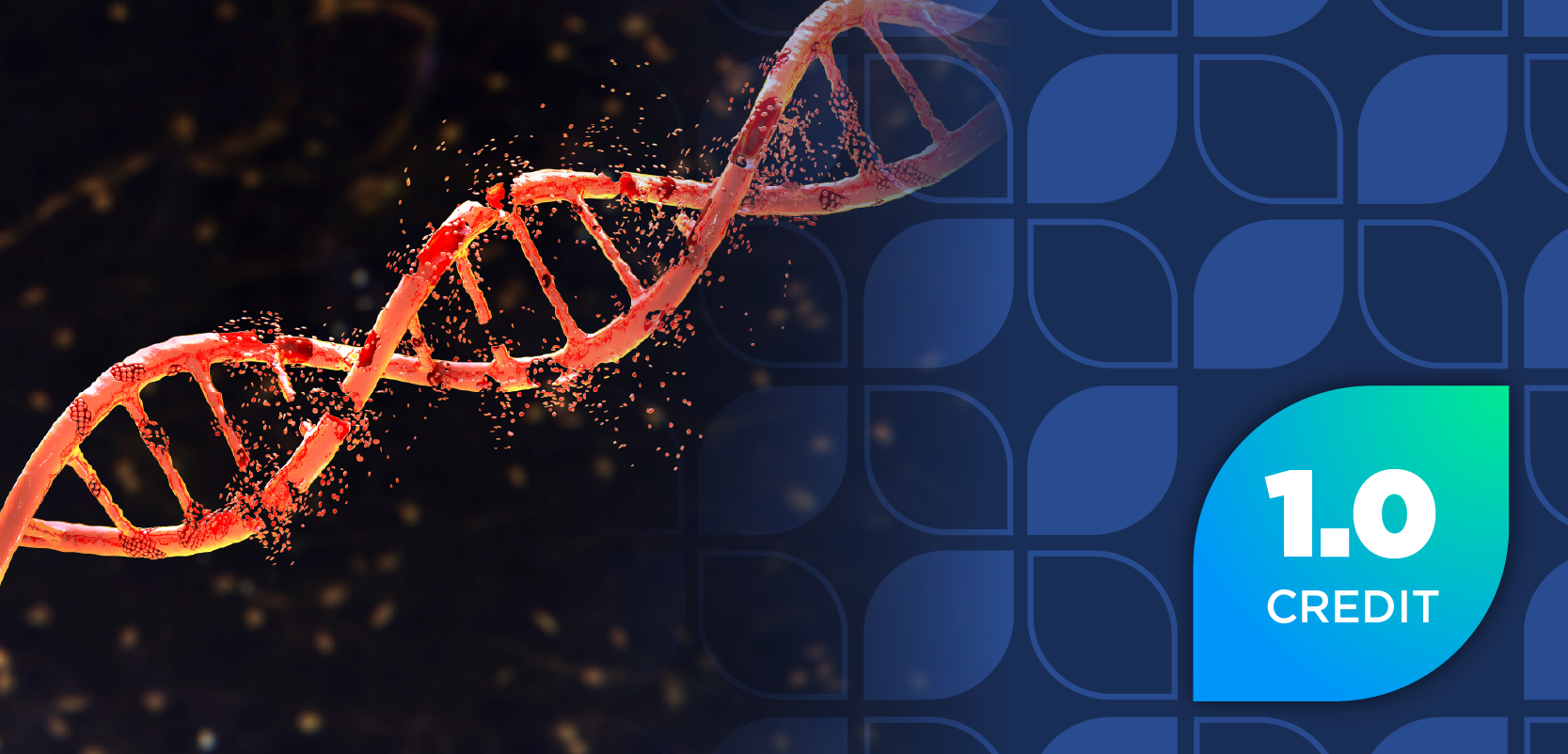
- June 2019 Women's Health
- Volume 85
- Issue 6
Postpartum Depression Is Not Just Baby Blues
Treatment, including appropriate long-term use of medications and therapy, frequent follow-up from clinicians, and careful reassessment, can save lives.
Maternal postpartum depression (PPD), although common, disabling, and sometimes life-threatening, often remains undiagnosed and undertreated. Recent discoveries concerning PPD’s pathophysiology offer tremendous hope to the approximately 400,000 women who develop it annually in the United States.1 Among those women, about 15% will have a disabling, persistent condition, and a small percentage will develop postpartum psychosis.2-4
Subject matter experts indicate that biologic, hormonal, and psychosocial issues are risk factors for postpartum mood disorders (table5-11).12,13 Symptoms can last 1 year or longer, with 25% of women having symptoms at 1 year.4,14 Sadly, many women do not seek prompt treatment, thinking they are just tired or finding other excuses, such as “it’s just postpartum blues.” In addition, tremendous stigma accompanies this condition.
POSTPARTUM BLUES OR PPD?
Postpartum blues—anxiety, fluctuating mood, irritability, and tearfulness—are real and tend to develop around the fourth or fifth day postpartum in about half of women. Generally, these symptoms spontaneously diminish over 2 weeks. Conversely, PPD is persistent and interferes with the mother’s ability to care for herself and others and may not resolve spontaneously. PPD manifests as anhedonia, appetite disturbance, depressed mood, fatigue, insomnia, recurring thoughts of death, suicidal thoughts, and tearfulness. As with other kinds of depression, symptoms occur along a continuum.15 Affected individuals may also have ambivalent feelings, obsess about the baby, or think about hurting her children or herself.16
TREATMENT: MONITOR PATIENT AND PARTNER
Early treatment is crucial and starts with nonpharmacologic strategies in women with mild to moderate depressive symptoms. These include group or individual psychotherapy and psychoeducational support groups. Pharmacists should note that some new mothers are breastfeeding and may be hesitant to take medication. For these women, nonpharmacologic strategies are very important.17-19
When the clinician and patient decide that medication is needed, treatment follows a pattern similar to that used in other kinds of depression (figure4 ). Generally, treatment starts with a selective serotonin reuptake inhibitor (SSRI) or a serotonin/norepinephrine reuptake inhibitor administered at the same doses used for others who have depression. Clinicians can consider other antidepressants if first-line antidepressant medications are ineffective or tolerated poorly.4
In March 2019, the FDA approved the first drug specifically for PPD. Brexanolone is chemically identical to endogenous allopregnanolone, a hormone that falls after childbirth. In PPD, gamma-aminobutyric acid-A receptors become dysregulated. Brexanolone acts as a positive allosteric modulator at those receptors. Clinical trials identified some serious risks, including excessive sedation or sudden loss of consciousness during administration, so brexanolone has a risk evaluation and mitigation strategy: Patients must receive treatment at a certified health care facility under close monitoring; during the 60-hour infusion, patients must have continuous pulse oximetry; and patients may see their children only under direct supervision. Brexanolone’s most common adverse reactions include dry mouth, flushing, loss of consciousness, and sleepiness.20 Postmarketing trials are under way, and obstetricians look forward to the results.4
Pharmacy staff members should note that a form of PPD occurs in fathers. Risk factors appear to be similar to those that mothers experience. A history of depression, financial stressors, and low social support are particularly important in men. When a father and mother both experience depression, they will need increased monitoring and support.21-23
BREASTFEEDING
Most antidepressants can be taken during breastfeeding. Paroxetine and sertraline appear to be least likely to pass into breast milk and are preferred as initial therapy. Clinicians should note that all SSRIs pass into breast milk at levels compatible with breastfeeding, and a healthy full-term infant should not be affected. The benefits of breastfeeding outweigh concerns about SSRI exposure in most cases.24,25 Clinicians and patients can find excellent, evidence-based recommendations about breastfeeding and drugs at LactMed, which is sponsored by the Toxicology Data Network.26
CONCLUSION
With celebrities such as Aarti Sequeira and Chrissy Teigan, going public with their own struggles with PPD, women may be more likely to come forward for help when they have symptoms. Better outcomes will require several things, including appropriate long-term use of medications and therapy, frequent checkin and follow-up from clinicians, and careful reassessment at every opportunity.
Jeannette Y. Wick, MBA, RPh, FASCP, is an assistant director of the Office of Pharmacy Professional Development at the University of Connecticut School of Pharmacy in Storrs.
REFERENCES
- Norwitz ER, Mahendroo M, Lye SJ. Biology of parturition. In: Creasy RK, Resnik R, Iams JD, Lockwood CJ, Moore TR, Greene MF, eds. Creasy and Resnick's Maternal Fetal Medicine: Principles and Practice. 66-79.
- O'Hara MW, Neunaber DJ, Zekoski EM. Prospective study of postpartum depression: prevalence, course, and predictive factors. J Abnorm Psychol. 1984;93(2):158-171.
- US Preventive Services Task Force. Screening for depression in adults: U.S. preventive services task force recommendation statement. Ann Intern Med. 2009;151(11):784-792. doi: 10.7326/0003-4819-151-11-200912010-00006.
- Stewart DE, Vigod SN. Postpartum depression: pathophysiology, treatment, and emerging therapeutics. Annu Rev Med. 2019;70:183-196. doi: 10.1146/annurev-med-041217-011106.
- Bloch M, Schmidt PJ, Danaceau M, Murphy J, Nieman L, Rubinow DR. Effects of gonadal steroids in women with a history of postpartum depression. Am J Psychiatry. 2000;157(6):924-930.
- Mehta D, Newport DJ, Frishman G, et al. Early predictive biomarkers for postpartum depression point to a role for estrogen receptor signaling. Psychol Med. 2014;44(11):2309-22. doi: 10.1017/S0033291713003231.
- Nelson DB, Freeman MP, Johnson NL, McIntire DD, Leveno KJ. A prospective study of postpartum depression in 17,648 parturients. J Matern Fetal Neonatal Med. 2013;26(12):1155-1561. doi: 10.3109/14767058.2013.777698.
- Woolhouse H, Gartland D, Hegarty K, Donath S, Brown SJ. Depressive symptoms and intimate partner violence in the 12 months after childbirth: a prospective pregnancy cohort study. BJOG. 2012;119(3):315-323. doi: 10.1111/j.1471-0528.2011.03219.x.
- Wu Q, Chen HL, Xu XJ. Violence as a risk factor for postpartum depression in mothers: a meta-analysis. Arch Womens Ment Health. 2012;15(2):107-114. doi: 10.1007/s00737-011-0248-9.
- Silverman ME, Reichenberg A, Savitz DA, et al. The risk factors for postpartum depression: A population-based study. Depress Anxiety. 2017;34(2):178-187. doi: 10.1002/da.22597.
- American Society of Anesthesiologists. Postpartum depression linked to mother's pain after childbirth. October 14, 2018. MedicalXPress. medicalxpress.com/news/2018-10-postpartum-depression-linked-mother-pain.html. Accessed April 12, 2019.
- Lancaster CA, Gold KJ, Flynn HA, Yoo H, Marcus SM, Davis MM. Risk factors for depressive symptoms during pregnancy: a systematic review. Am J Obstet Gynecol. 2010;202(1):5-14. doi: 10.1016/j.ajog.2009.09.007.
- ACOG Committee Opinion No. 343. Psychosocial risk factors: perinatal screening and intervention. Obstet Gynecol. 2006;108(2):469-477.
- Sit DK, Wisner KL. Identification of postpartum depression. Clin Obstet Gynecol. 2009;52(3):456-468.
- APA. DSM-IV-TR. The Diagnostic and Statistical Manual of Mental Disorders. 4th ed. Washington, DC: American Psychiatric Association; 1994.
- Spinelli MG. Maternal infanticide associated with mental illness: prevention and the promise of saved lives. Am J Psychiatry. 2004;161(9):1548-1557.
- Wisner KL, Sit DK, McShea MC, et al. Onset timing, thoughts of self-harm, and diagnoses in postpartum women with screen-positive depression findings. JAMA Psychiatry. 2013;70(5):490-498. doi: 10.1001/jamapsychiatry.2013.87.
- di Scalea TL, Wisner KL. Pharmacotherapy of postpartum depression. Expert Opin Pharmacother. 2009;10(16):2593-2607. doi: 10.1517/14656560903277202.
- Freeman MP. Postpartum depression treatment and breastfeeding. J Clin Psychiatry. 2009;70(9):e35. doi: 10.4088/JCP.8001tx19c.
- Freeman MP, Davis MF. Supportive psychotherapy for perinatal depression: preliminary data for adherence and response. Depress Anxiety. 2010;27(1):39-45. doi: 10.1002/da.20596.
- ZULRESSO [prescribing information]. Cambridge, MA: Sage Therapeutics, Inc; 2019. accessdata.fda.gov/drugsatfda_docs/label/2019/211371lbl.pdf. Accessed May 13, 2019.
- Cameron EE, Sedov ID, Tomfohr-Madsen LM. Prevalence of paternal depression in pregnancy and the postpartum: an updated meta-analysis. J Affect Disord. 2016;206:189—203. doi: 10.1016/j.jad.2016.07.044.
- Leung BM, Letourneau NL, Giesbrecht GF, Ntanda H, Hart M, APrON Team. Predictors of postpartum depression in partnered mothers and fathers from a longitudinal cohort. Community Ment Health J. 2017;53(4):420-431. doi: 10.1007/s10597-016-0060-0.
- Kerstis B, Engstrom G, Edlund B, Aarts C. Association between mothers’ and fathers’ depressive symptoms, sense of coherence and perception of their child’s temperament in early parenthood in Sweden. Scand J Public Health. 2013;41(3):233-239. doi: 10.1177/1403494812472006.
- Stewart DE, Vigod S. Postpartum depression. N Engl J Med. 2016;375(22):2177—2186.
- Davanzo R, Copertino M, De Cunto A, Minen F, Amaddeo A. Antidepressant drugs and breastfeeding: a review of the literature. Breastfeed Med. 2011;6(2):89—98. doi: 10.1089/bfm.2010.0019.
- US National Library of Medicine. LactMed. Toxnet website. https://toxnet.nlm.nih.gov/newtoxnet/lactmed.htm. Accessed May 11, 2019.
Articles in this issue
almost 6 years ago
Addressing Barriers to PCSK9 Inhibitor Access in the Community Pharmacyover 6 years ago
OTC Case Studies: Women's Healthover 6 years ago
Expand Your Pharmacy Footprintover 6 years ago
Discussion About Facebook Post Turns Into a Lawsuitover 6 years ago
CVD in Women Is an Underrecognized Problemover 6 years ago
Do Statins Interfere With Clopidogrel During Platelet Therapy?over 6 years ago
Pharmacists Can Help Women Undergoing Menopauseover 6 years ago
Safety Requires a Healthy Preoccupation With Failureover 6 years ago
Prescription Drug Monitoring Programs Are Invaluableover 6 years ago
Are Women's Supplements and Vitamins Useful?Newsletter
Stay informed on drug updates, treatment guidelines, and pharmacy practice trends—subscribe to Pharmacy Times for weekly clinical insights.
















































































































































































































